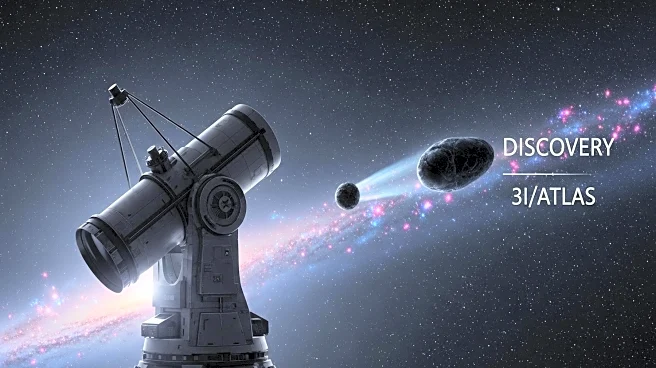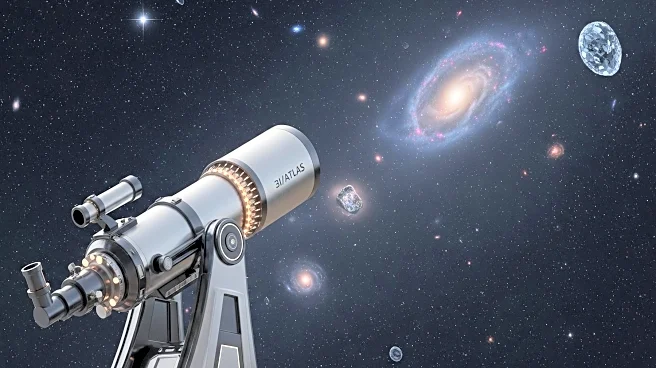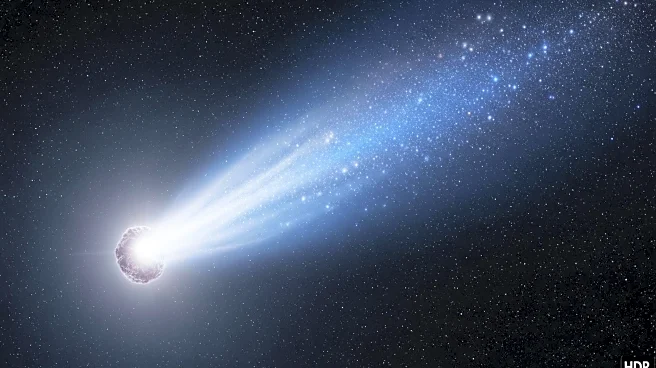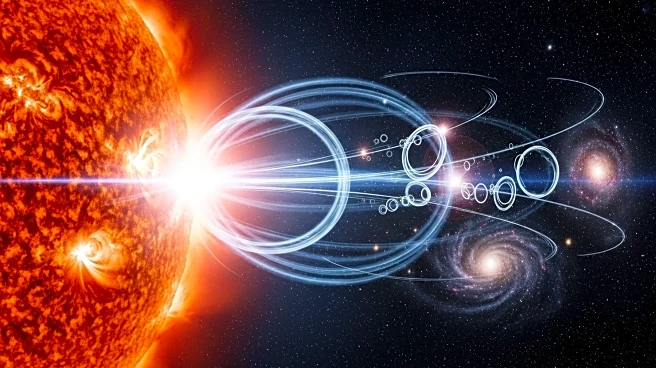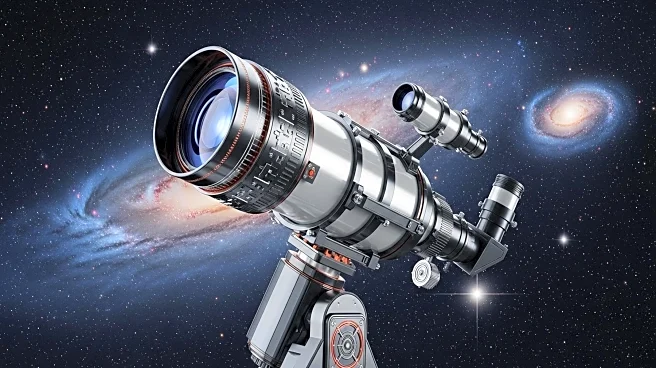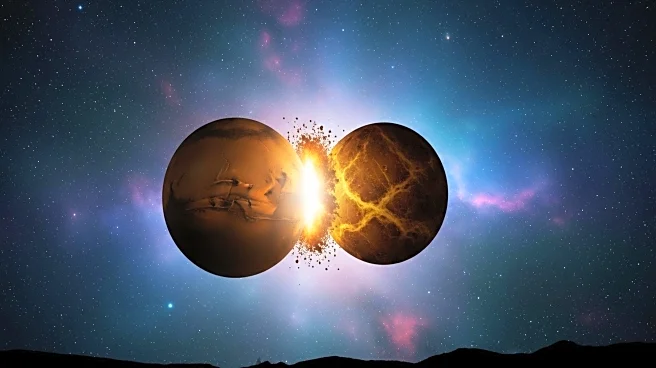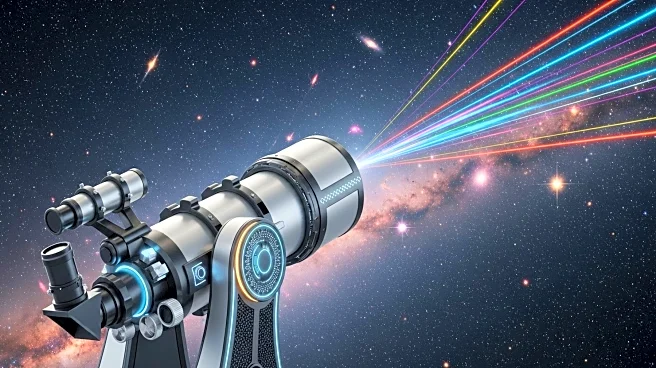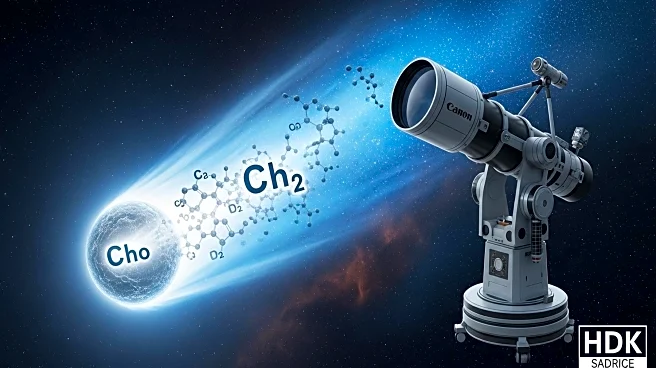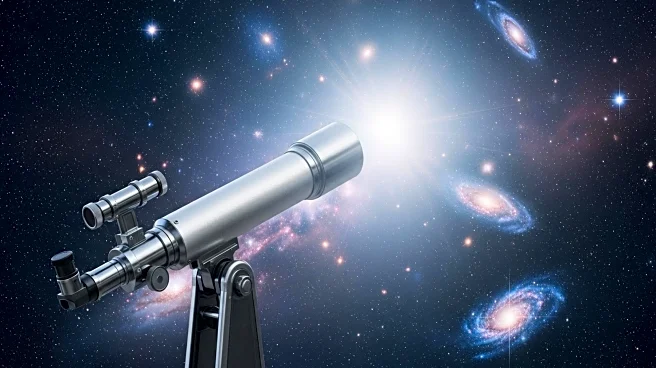What's Happening?
NASA's Transiting Exoplanet Survey Satellite (TESS) and the Webb Telescope have provided new insights into the interstellar object 3I/ATLAS. Observations from TESS, conducted between May 7 and June 2, 2025, indicated that 3I/ATLAS was active at a heliocentric distance six times that of the Earth-Sun separation, which is unusual for cometary activity. On August 6, 2025, the Webb Telescope confirmed a carbon dioxide gas plume around 3I/ATLAS, with significantly lower levels of water and carbon monoxide. The SPHEREx space observatory mapped this CO2 plume to a distance of 348,000 kilometers around the object. Further imaging by the Gemini South telescope on August 27, 2025, revealed a teardrop-shaped tail in the anti-Sun direction, suggesting the influence of solar wind and radiation pressure. The mass loss rates from 3I/ATLAS are notably higher for CO2 compared to H2O, challenging typical cometary expectations.
Why It's Important?
The findings regarding 3I/ATLAS are significant as they challenge existing models of cometary behavior and interstellar object composition. The detection of a CO2-dominant plume and the teardrop-shaped tail suggest unique interactions with solar forces, which could provide insights into the nature of interstellar objects. The anomalous alignment of 3I/ATLAS's trajectory with the ecliptic plane raises questions about its origin and composition, potentially indicating industrial processes rather than natural cometary formation. This discovery could impact our understanding of interstellar materials and their interactions within the solar system, influencing future research and exploration strategies.
What's Next?
As 3I/ATLAS approaches its perihelion on October 29, 2025, scientists anticipate increased outgassing and interaction with solar radiation and wind pressures. This period of heightened activity may reveal more about the object's composition and origin. Researchers will continue to monitor 3I/ATLAS closely, using various telescopes and observatories to gather data that could answer fundamental questions about interstellar objects. The scientific community is poised to analyze these findings, which may lead to revisions in theories regarding the formation and behavior of such objects.
Beyond the Headlines
The detection of cyanide and nickel without iron in the gas plume of 3I/ATLAS suggests industrial production, which is atypical for natural comets. This raises ethical and scientific questions about the potential artificial nature of interstellar objects. The implications of such findings could extend to discussions about extraterrestrial technology and the presence of non-natural materials in space. As research continues, the scientific community may need to consider the possibility of artificial interstellar objects and their impact on our understanding of the universe.
